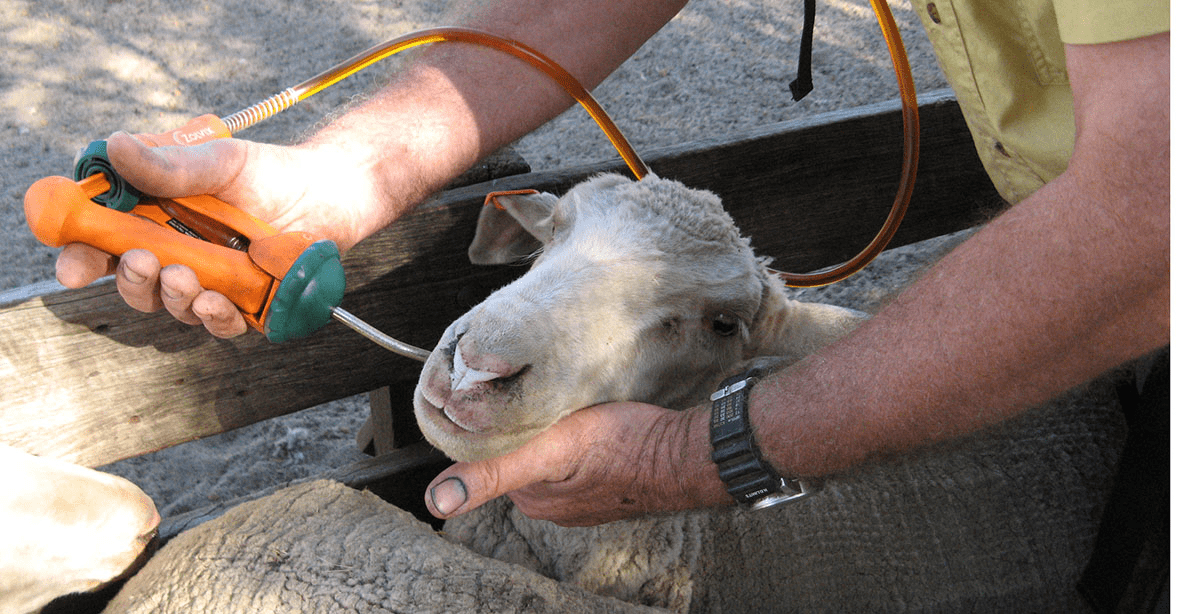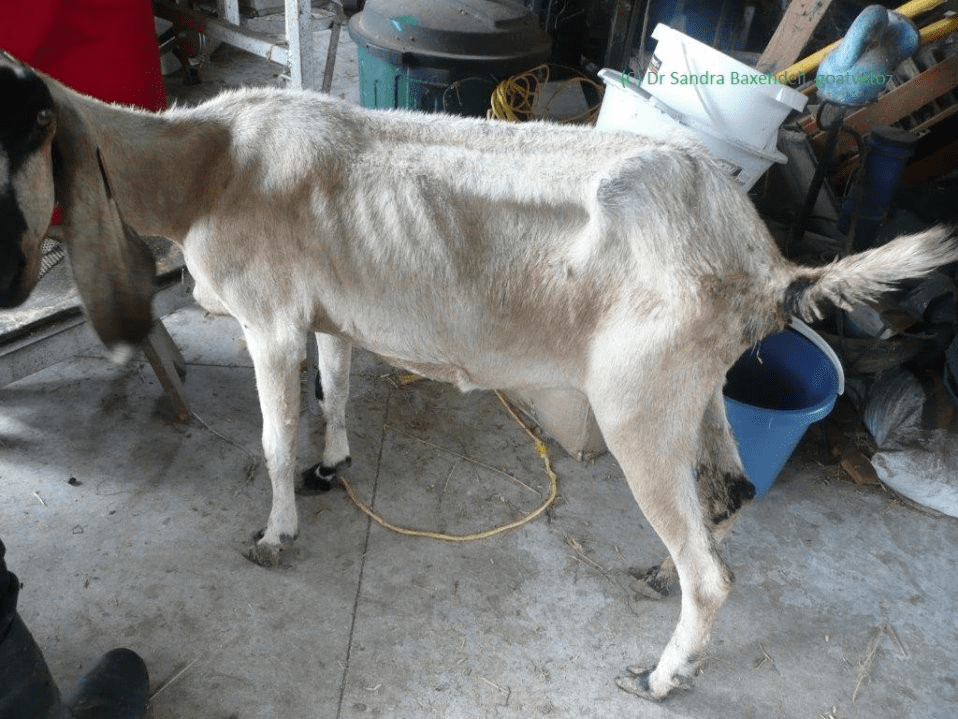In this article, you will be studying the diseases and parasites of sheep and goats. Since most of the diseases and parasites are common to both sheep and goats they will be treated together.
Wastage due to disease and parasites is a source of serious economic loss and one of the main constraints to the development of sheep and goats. The disease incidence also becomes greater where a low level of nutrition causes reduced resistance.
Poor sanitation and hygiene also affect the health performance of small ruminants. Under traditional village husbandry systems, 25-50% of lambs/kids borne are lost. Among adult animals, annual mortality ranges from 14- 20%.
Classification of Diseases in Sheep and Goats
Three categories of diseases affect sheep and goats:
1. Infectious diseases: Infectious diseases include pest du petits ruminants, (PPR) contagious caprinepleuro-pheumonia, and hemorrhagic septicemia.
2. Non-Infectious diseases: This refers to various metabolic disorders.
3. Parasites: Parasites especially internal parasites such as helminths, seriously affect sheep and goats.
Read Also: Complete Guide on Treatment of Livestock Diseases
Some Common Diseases and Parasites of Sheep and Goats

1. Pest du petits ruminants (PPR)
PPR, a pest of all small ruminants is a major disease affecting small ruminants throughout tropical Africa, goats suffer more from the disease than sheep. PPR is caused by a virus similar to the rinderpest virus sign. Fever, followed by watery eyes, discharge from nostrils, necrotic lesion on the buccal mucosa, and diarrhea.
Treatment: Systemic antibodies notably long-acting terramycin.
2. Enteroxaemia
This is a serious disease of sheep and goats. It is caused by the absorption from the intestine of the toxin of a bacterium. This bacterium is normally found in harmless numbers in the intestine, but when there is digestive upset the organism multiplies rapidly and produces a large amount of the toxin. The disease is associated with animals in good condition usually exposed to the grazing of lush grass or green crops.
Signs: With abdominal pains and severe diarrhea, the animal appears dull and listless. Animals usually recover.
Prevention: Avoid sudden changes in feed without an adaptation period.
Control: A variance is available for the protection of susceptible animals.
3. External parasites infestations
Mange is common but does not cause major problems for the animal. Flies and like are also commonly found on sheep and goats but do not ensure serious disorder unless their numbers become excessive prevention – vaccinate young animals and if possible entire flock annually with the tissue vaccine use to prevent rinderpest.
Prevention: Vaccination of all animals preferably before the rainy season. The vaccine should be injected subcutaneously in the recommended dose. Ticks are common and more serious because in addition to irritation and anemia that all external parasites cause, they can transmit a wide range of diseases for which the diagnosis is difficult and necessitates laboratory tests.
Control: External parasites can be controlled by regular dipping or spraying with an acaricide.
Read Also: Neonatal Pig Diarrhoea: Clinical Signs, Prevention and Treatment
4. Anthrax
This is an acute septicemic caused by a highly resistant organism, Bacillus anthracis Animals are infected through the soil that has been contaminated by the carcass of infected animals. The bacteria survive in the soil in the form of sparse which is ingested by the animal.
Anthrax is usually fatal death occurs within 24 hours. Recovery is rare.
Diagnosis: In the dead animal, the whole carcass and organs are blackish. The spleen particularly has a characteristics blackish appearance and is swollen when the cut is realized thick blackish liquid. Anthrax can be transmitted to man so care should be taken during post-mortem.
Control: The carcasses, including the skin, should be destroyed because they contain the bacteria they should be buried deep in quicklime or burnt.
5. Foot-rot
This is a common and serious disease that affects the flock. Foot rot is caused by the growth of organisms and fungi of a particular species in the demise of the foot. Other organisms found in the environment add to the infection. The causative organisms thrive best under wet conditions. During the dry season, it becomes dormant and uncommon.
Signs: The first sign is lameness on examination the frog and coronet are seen to be swollen and painful on palpation. There may be discharge between the pews. If not treated the condition can deteriorate and the animal may die.
Prevention: Animals should be kept away from wet, muddy, or marshy pastures. Housing quarters should be well drained.
Control: Foot bath should be carried out with a solution – containing 55 copper sulphate and an antiseptic. The affected part should be cleaned and all necroed parts removed. Affected animals should be isolated for a few days in a dry place.
6. Mastitis
Mastitis is the infection of one or both udders by microorganisms that are usually found in the environment. Mastitis does not usually threaten the dam’s life, but the affected udder is often lost after recovery so that the ewe’s productive capacity is impaired.
Signs: The affected udder is red and painful. The milk obtained from it is turned into a serious liquid, which may be purulent or blood-stained. Lamb kids stop sucking from the affected udder and an abscess may form with a mixture of milk, pits, and blood oozing from it.
Prevention: Sheep and goat houses should be kept clean and sharp objects that can cause injury to the udder should be removed.
Control: An antibiotic-based preparation should be infused into the treatment after the udder has been emptied. Systemic antibiotics should be used.
7. Parasite gastro-enteritis
This is caused by a massive infestation of the abomasum’s and intestines with small parasitic worms. Kids are particularly susceptible while adults are resistant. Progressive loss of condition, which may proceed to a state of emaciation. Appetite usually remains until a late stage.
Prevention: Avoid restricted grazing since it leads to a build-up of infective larvae. The majority of larvae die within 6 weeks of emerging from the eggs so resting pastures for the length of time will so resting pasture for this length of time will ensure a reduction of the larval concentration.
Control: Regular use of anthelmintic.
In summary, you have studied the various diseases that can affect sheep and goats on the farm. The signs of such diseases, their preventive measures, and mode of control. You will agree with me that a lot depends on the action of the keeper/rearer to prevent/reduce disease incidence in his herd.

